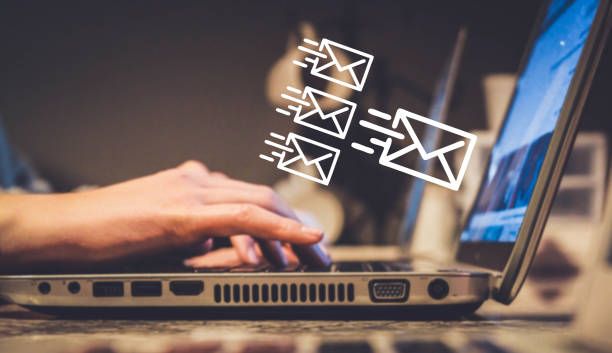In today's digital era, email has become an essential mode of communication. However, with the convenience of email also comes the challenge of managing unwanted or spam emails that flood our inboxes. Thankfully, Gmail provides powerful features to help users regain control and manage unwanted messages effectively. One such feature is the ability to bounce back emails. In this comprehensive guide, we will explore how you can master the art of bouncing back emails in Gmail, enabling you to filter out unwanted messages, reduce spam, and enhance your email communication.
Understanding Email Bouncing

Email bouncing refers to the process where an email sent by the sender fails to reach the recipient's inbox and is returned to the sender. There are various reasons why an email may bounce, including invalid or non-existent email addresses, full mailboxes, spam filters, or blacklisting. When you bounce back an email, you essentially return it to the sender, notifying them that their message was not delivered successfully.
Why Bounce Back Emails in Gmail?
- Reduce Spam and Unwanted Messages: Bouncing back emails in Gmail allows you to filter out spam and unwanted messages effectively. By notifying senders that their emails were not successfully delivered, you discourage future communication from those sources. This helps to declutter your inbox and maintain a cleaner and more organized email environment.
- Protect Your Privacy and Security: Bouncing back emails is an effective way to protect your privacy and security. By rejecting emails from unknown or suspicious senders, you minimize the risk of falling victim to phishing attempts, scams, or malicious content that may be present in some unsolicited messages.
- Take Control of Your Inbox: Bouncing back emails gives you the power to control what lands in your inbox. You can establish boundaries and filter out unwanted messages, allowing you to focus on important communications and prevent distractions caused by irrelevant or spammy emails.
- Improve Email Communication: By bouncing back emails, you send a clear message to senders that their messages did not reach their intended destination. This prompts them to update their contact information or take necessary actions to ensure successful email delivery in the future. Consequently, your email communication improves as senders become more mindful of using accurate and valid email addresses.

How to Bounce Back Emails in Gmail

- Enable the "Canned Responses" Feature: Gmail provides a feature called "Canned Responses" that allows you to create pre-written email templates. Enable this feature by going to "Settings," selecting the "Advanced" tab, and enabling "Canned Responses."
- Create a Bounce Back Email Template: Once the "Canned Responses" feature is enabled, create a new email and craft a template that politely informs the sender that their email was not successfully delivered. Include a brief explanation and any necessary instructions if they need to update their contact information.
- Save the Template: After composing the bounce back email, save it as a canned response by clicking the three dots in the lower-right corner of the email compose window and selecting "Canned Responses." Choose "New canned response" and give it a name, such as "Bounce Back."
- Set Up a Filter: To automatically bounce back emails, you can create a filter that triggers the canned response. Go to "Settings," select the "Filters and Blocked Addresses" tab, and click on "Create a new filter." Define the conditions under which you want the bounce back response to be triggered (e.g., specific senders or keywords). Then, select the option to "Send canned response" and choose the "Bounce Back" template you created.
- Save and Apply the Filter: Once you have set up the filter, save it by clicking "Create filter." Gmail will apply the filter to incoming messages, and any emails that meet the specified criteria will trigger the bounce back response.
Commonly Asked Questions
Q1. Can I bounce back multiple emails at once?
A1. Gmail's filtering system allows you to create rules and conditions that can be applied to multiple emails simultaneously. By setting up appropriate filters, you can bounce back multiple emails that meet the defined criteria.
Q2. Will bouncing back emails prevent future messages from the same sender?
A2. Bouncing back emails notifies the sender that their message was not successfully delivered. While it may discourage future communication from some senders, it does not guarantee that all future messages from the same sender will be blocked. However, you can set up additional filters or mark the sender as spam to further manage their emails.
Q3. Can I customize the bounce back message?
A3. Yes, you can customize the bounce back message using Gmail's "Canned Responses" feature. This allows you to create personalized and informative messages that politely notify senders about the unsuccessful delivery of their emails.
Q4. Is bouncing back emails the same as blocking senders?
A4. Bouncing back emails and blocking senders are different actions. Bouncing back an email informs the sender that their message was not delivered, while blocking a sender prevents future messages from reaching your inbox altogether. You can use both features in combination to manage your email communication effectively.
Conclusion
Bouncing back emails in Gmail is a valuable technique for managing unwanted messages, reducing spam, and taking control of your inbox. By leveraging the power of Gmail's "Canned Responses" and filtering system, you can create personalized bounce back messages and automate the process. Remember to use this feature responsibly and adjust filters and settings as needed to optimize your email management. Take charge of your email communication, maintain a clutter-free inbox, and enjoy a more productive and efficient email experience with Gmail's bounce back feature.

